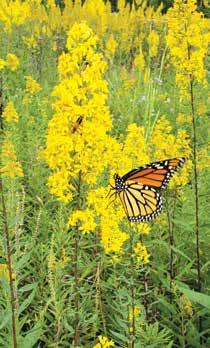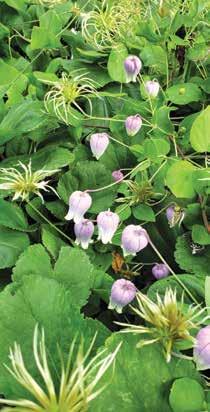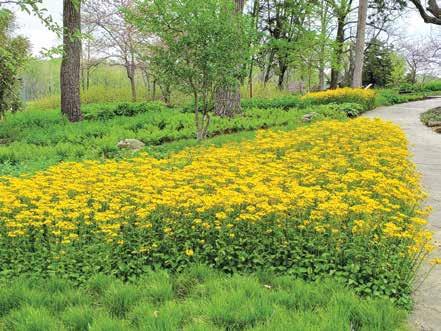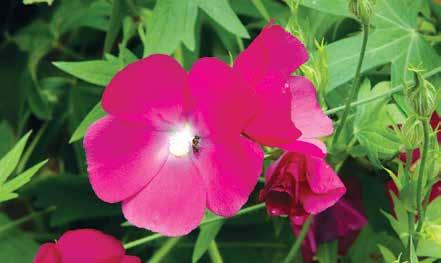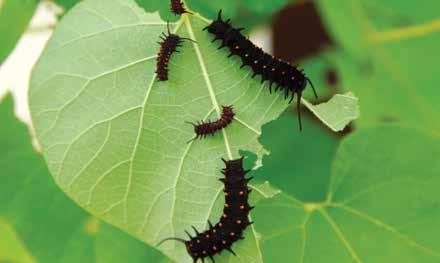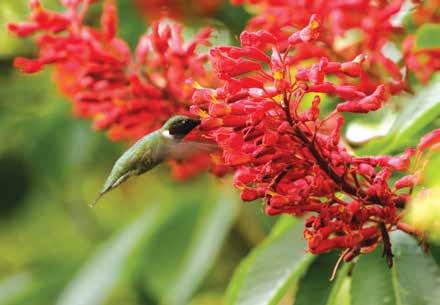
3 minute read
More Than a Pretty Face Plants with Purpose
When I started Missouri Wildflowers Nursery in 1984, few people were thinking about how the plants that they used in gardens were interacting with animal life in the area. They were more focused on the attractiveness of the plants. Today many people want to know how the plants that they are putting in their gardens contribute to the ecosystem. What pollinates their flowers. What eats their leaves, seeds and fruits.
When I started the nursery, I only did it with the idea that native plants needed a place to live, because the natural communities where they occurred were disappearing. It seemed logical that gardeners would enjoy growing native plants, especially the attractive ones. At that time, I wasn’t considering the value that natives have in supporting a web of living organisms.
In 2007, Douglas W. Tallamy published his book, Bringing Nature Home, How You Can Sustain Wildlife with Native Plants. It connected all the dots for me as to the real need for native plants on our properties and in our immediate environments, not just those preserved wildlands far away but our gardens, yards, roadsides, and more. Today his message is everywhere, promoting the use of native plants to sustain wildlife. Tallamy talks a lot about the connection between native plants, insects, and birds, pointing out that 96% of all birds feed their young insects, particularly the caterpillars. And the native insects must have native plants to feed on. His research shows that exotic plants from other continents are rarely used by native insects.
Not only are native plants workhorses for the environment, but many are also a delight to see. As time passes more and more species that aren’t so showy, make it into the nursery trade because customer interests are expanding to more than appearance.
Gardeners frequently ask for plants with flowers that will feed hummingbirds, bees, or butterflies. They know about the declining bee and monarch butterfly populations. Host plants that moth and butterfly caterpillars feed on, are also in big demand. Gardeners grow the host plants because they and their children enjoy seeing the life cycle of these insects, they want to help a declining species like monarch butterflies, and they want to see more birds successfully nesting on their properties. If you want to help birds feed their young caterpillars, plant oaks, cherries, and willows. They are the top-ranking tree groups in terms of the numbers of different moth and butterfly caterpillars supported. Oaks host over 550 moth and butterfly species
The furor over native plants is high now, thanks a lot to social media. If you are new to the native plant idea, you might consider the
MERVIN WALLACE Natives Plantsman
“Missouri Native Plant Society” Facebook page, just one of many social media forums involved with native species. If you haven’t used any native plants that you know of in your gardens, this spring is a good time to start. Just plunk a few in and see what shows up. Chewed leaves are a welcome sight.
A few suggestions to consider for your garden
1. Red buckeye, Aesculus pavia, blooms within a few days of when hummingbirds arrive. The red tube-shaped flowers are almost exclusively pollinated by hummingbirds.
2. Showy goldenrod, Solidago speciosa, and other goldenrods are great at providing nectar for migrating monarchs. Many kinds of insects use goldenrods for nectar and pollen in fall.
3. Sullivant’s milkweed, Asclepias sullivantii, and other milkweed species are hosts to monarch butterfly caterpillars. Sullivant’s milkweed prefers full sun and average to moist soil.
4. Purple poppy mallow, Callirhoe involucrata, is a full sun species with sprawling stems. The plants can be 4 or 5 feet across, yet less than 6 inches high, and they will hang over landscape walls. Purple poppy mallow is pollinated by bees.
5. Dutchman’s Pipe Vine, Aristolochia tomentosa. Caterpillars of the pipevine swallowtail butterfly feed exclusively on Dutchman’s pipevine and one other Aristolochia species in Missouri.
6. Blue wild indigo, Baptisia australis, is in the pea or Legume family. It grows in full sun and well-drained soil. Blue indigos are usually pollinated by bumblebees.
7. Leather flower, Clematis versicolor, is a nice small vine that can climb over other plants or on a small trellis. We have had one in a large pot for 15 years. The flowers are pollinated by bees.
8. Indian pink, Spigelia marilandica, has attractive flowers and foliage. Flowers are in late May and June with the foliage lasting well into September. Indian pink is pollinated by hummingbirds.
9. Roundleaf Groundsel, Packera obovata, makes an excellent groundcover in part shade and average soil. The four-inch-high foliage is green through winter. Flowers in April and May.
10. Service berry, Amelanchier arborea, is a small tree that’s a great substitute for Bradford pears. The fruits are ripe in early June and are readily consumed by birds.
Mervin Wallace started Missouri Wildflowers Nursery in 1984. The nursery supplies propagated native species that have their genetic origin from within the state of Missouri. His activities are seasonal, doing plant sales in the spring and fall, harvesting wildflower seeds in summer and fall, and preparing the nursery’s catalog in winter. But that’s not all.


